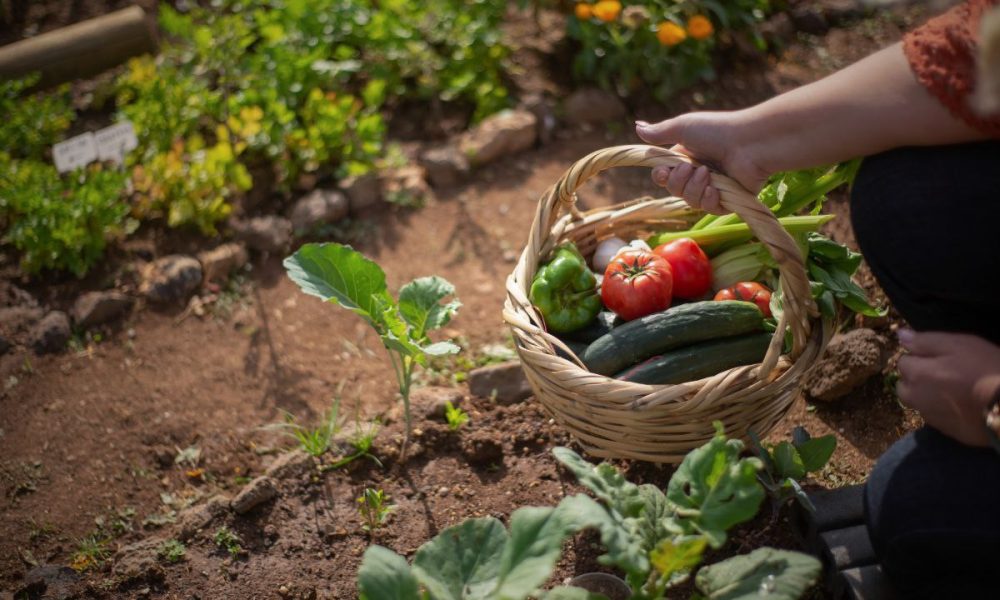Preserving your harvest is essential for enjoying homegrown produce year-round and reducing food waste. There are several methods to store fruits, vegetables, and herbs for the long term, each with its unique benefits. While you dream and plan for the bounty of your harvest, enjoy these highlights of various preservation techniques and tips for getting the best results.
Canning
Benefits: Canning allows you to store fruits, vegetables, and even meats for years. It’s a great way to preserve large quantities of produce at once.
Types:
– Water Bath Canning: Ideal for high-acid foods like tomatoes, pickles, and some fruits.
– Pressure Canning: Necessary for low-acid foods like vegetables, meats, and beans to ensure safety from botulism.
Steps:
1. Wash and sterilize canning jars and lids.
2. Wash, peel, and cut produce as needed.
3. Pack the produce into jars, leaving appropriate headspace.
4. Use a water bath or pressure canner according to the recipe’s instructions.
5. Let jars cool undisturbed. Check seals before storing them in a cool, dark place.
Freezing
Benefits: Freezing retains the nutritional value and flavor of fresh produce. It’s quick, easy, and suitable for a variety of foods.
Tips:
– Blanch Vegetables: Briefly boil vegetables and then plunge them into ice water to preserve color, texture, and nutrients.
– Proper Packaging: To prevent freezer burn use airtight containers or freezer bags.
– Labeling: Always label and date your packages for easy identification and rotation.
Steps:
1. Wash, peel, and chop produce as needed.
2. Blanch vegetables in boiling water, then cool in ice water.
3. Pat produces dry to avoid ice crystals.
4. Place produce in freezer-safe bags or containers, removing as much air as possible.
5. Store in the freezer at 0°F (-18°C) or lower.
Drying and Dehydrating
Benefits: Drying removes moisture from foods, preventing the growth of bacteria and mold. It’s energy-efficient and creates lightweight, shelf-stable foods.
Methods:
– Air Drying: Suitable for herbs, hot peppers, and certain fruits. Hang produce in a dry, well-ventilated area.
– Oven Drying: Use a low oven temperature (140°F/60°C) to dry fruits, vegetables, and herbs.
– Dehydrators: Specialized appliances that provide consistently low heat and air circulation for efficient drying.
Steps:
1. Wash, peel, and slice produce uniformly.
2. Use your chosen method, ensuring the produce is completely dry.
3. Store dried foods in loosely packed containers for a week, shaking daily to evenly distribute any remaining moisture.
4. Transfer to airtight containers and store in a cool, dark place.
Fermenting
Benefits: Fermentation enhances the nutritional value of foods, adds probiotics, and provides unique flavors. It’s a natural preservation method that requires minimal equipment.
Common Fermented Foods:
– Sauerkraut: Fermented cabbage, rich in probiotics.
– Kimchi: Spicy fermented vegetables, often including cabbage and radishes.
– Pickles: Cucumbers or other vegetables fermented in a brine solution.
Steps:
1. Clean and cut vegetables as needed.
2. Mix water and salt to create a brine solution. (Brine is only needed when pickling, fermented vegetables break down when salted and their water content becomes the “brine”)
3. Place vegetables in jars, pour brine over them, and ensure they are submerged.
4. Cover jars and let sit at room temperature for several days to weeks, depending on the recipe.
5. Once fermented to taste, transfer jars to the refrigerator.
Root Cellaring
Benefits: Root cellaring is an age-old method that allows for the long-term storage of root vegetables, apples, and other hardy produce without the need for canning or freezing.
Ideal Conditions:
– Cool Temperatures: Typically 32-40°F (0-4°C).
– High Humidity: 85-95% to prevent produce from drying out.
– Ventilation: Adequate air circulation to prevent mold and rot.
Steps:
1. Select vegetables and fruits that store well, such as carrots, potatoes, beets, and apples. (Apples release ethylene gas that can cause other produce to age or rot, be mindful when storing)
2. Avoid bruising produce during harvest.
3. Use bins, shelves, or sandboxes to store produce.
4. Regularly check temperature, humidity, and the condition of stored produce.
Using preservation techniques on your harvest allows you to enjoy the flavors and nutrients of homegrown produce throughout the year. However, you do not need a harvest to start on your preservation journey, these methods will allow you to bulk buy food that might usually go to waste. Learning these methods even before you begin to farm can give you a great start before you are swamped in a harvest.
Each preservation method has its unique advantages and is suitable for different types of produce. By mastering a variety of techniques—canning, freezing, drying, fermenting, and root cellaring—you can maximize your harvest’s shelf life and reduce food waste. Happy preserving!
Did you know we have an entire category group in our app just about Preserving that currently has more than 1,800 members following it due to shared interest in the topic?
If you are interested in submitting an article for BeartariaTimes.com as a guest writer please email Editor@BeartariaTimes.com.




